A connected tram
A connected tram
-
Explanation of the project
Implementation of a unified tram network
The connection provided by the Trambaix and Trambesòs trams along the Diagonal avenue will link Francesc Macià and Glòries squares and resolve the current dysfunction: an interrupted tram. At the same time, it will mean an increase in its coverage, both urban and metropolitan. In this way, not only the city dwellers of Barcelona benefit, but also those of the neighbouring municipalities, from where 500,000 cars and motorbikes commute every day.
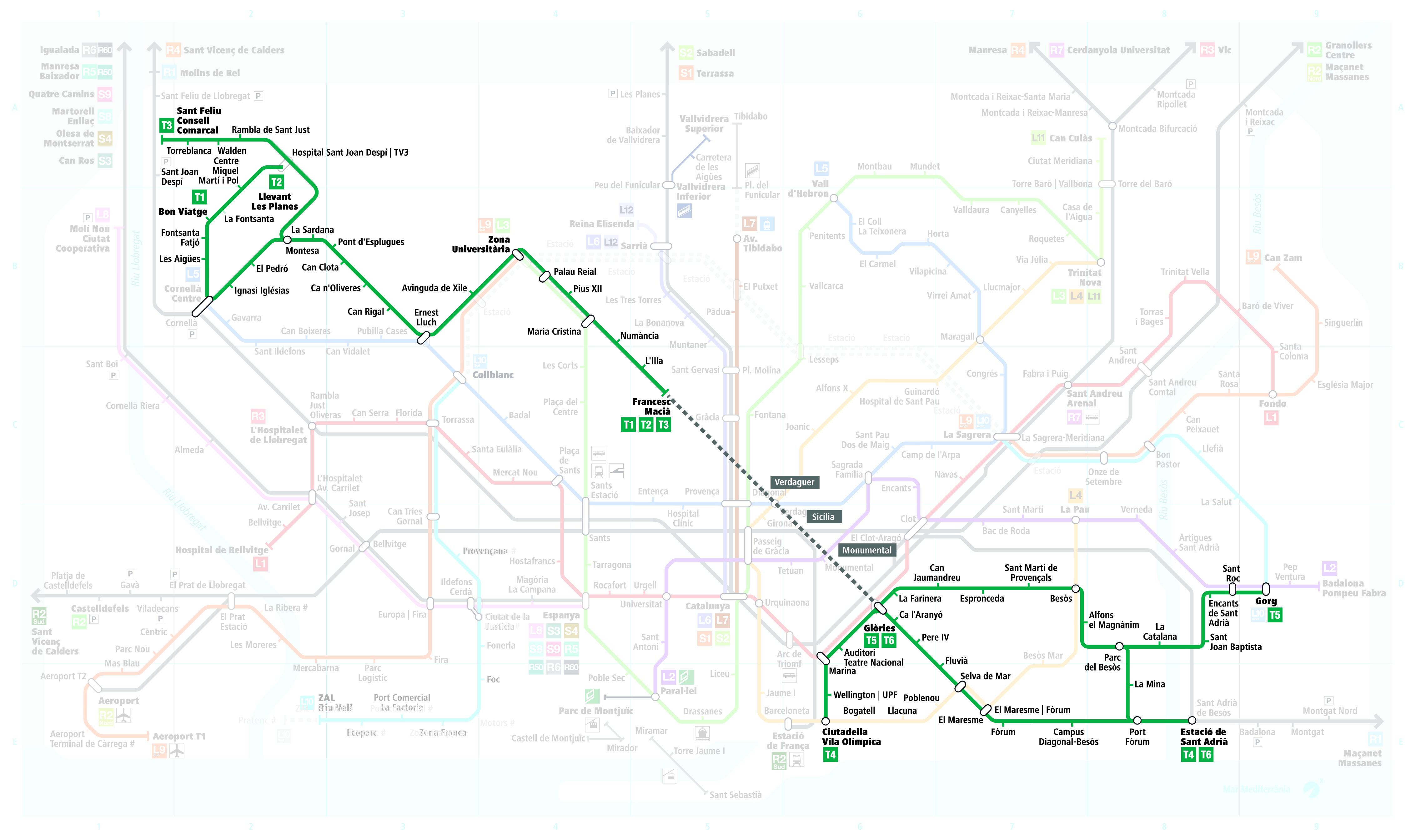
Benefits of the project
-
Decongestion of the bus network, especially the "H" lines of the New Barcelona Bus Network and some metropolitan lines.
- Creation of new exchangers in the central area with the vertical bus network and with the metro and railway stations that are close to it.
- It offers a connection without overflows between Diagonal Besòs - Badalona and Diagonal Universitària - Baix Llobregat connecting 9 municipalities of the Metropolitan Area.
- It reduces the private vehicle share. The studies carried out so far indicate that the connection would reduce by 12,500 the number of private vehicles that pass every day through the central section of Avinguda Diagonal.
- It allows urban transformation of this avenue and its surroundings: it will make it possible to gain 8,400 m2 of new pedestrian space, 2,500 m2 of cycling space and 5,000 m2 of green areas.
Key technical facts and figures of the project
- Length: 4 km
- Number of stops: 6 new ones and relocation of the existing Glòries stop.
- Travel time: 15 minutes between Glòries and Francesc Macià
- Commercial speed estimated: 16-17 km/h
- Procurement of new units of rolling stock: 18 (initial)
- Demand on workdays: 117,000 new users (227,000 for the network as a whole)
- Power: without overhead cables
- Initial investment €163.33 million
Timeline and phases of the project
- On 27 June 2017, the Executive Committee (EC) of the ATM gave the initial approval of the Informative Study of the Trambaix and Trambesòs connection.Implementation of a consolidated network”, starting a public information period that ended on 3 October of the same year.
- On 6 March 2018, the Board of Directors (CA) of the ATM approved the technical report in response to the submissions received, while taking into consideration the requests of Barcelona City Council to implement a power supply system without overhead cables and the execution of the final design in two successive phases.
- On 25 June 2019 the Informative Study was definitively approved, selecting the current alternative 1: tram line along Av. Diagonal over ground, to be developed in the final design.
- On 29 July 2020, the Executive Board of the ATM approved the final design of Phase 1 (Glòries – Verdaguer) of the connection of the trams and implementation of a consolidated tram network.
- In February 2021, Barcelona City Council and the ATM signed the collaboration agreement between the two bodies for the execution of the works and subsequent operation of the consolidated tram network.
- On 24 December 2021 BIMSA gave the green light to execute the first 4 lots of works of Phase 1 to lay the tracks between Glòries and Carrer de Girona, from 2022.
Section 1. Plaça de les (Glòries - Canopia – interchange)
Section 2. Diagonal (Lepant - Cartagena)
Section 3. Diagonal (Naples - Lepant)
Section 4. Diagonal (Girona - Naples)

- On 7 March 2022 Phase 1 works began simultaneously at different points on Diagonal between Glòries and Carrer Girona.
-
-
Phase 1: Glories - Verdaguer
This is the section between Plaça de les Glòries (Trambesòs connection) and the Diagonal/Girona junction, which connects to the Verdaguer Metro station.
Service for this phase is expected to commence in 2024.
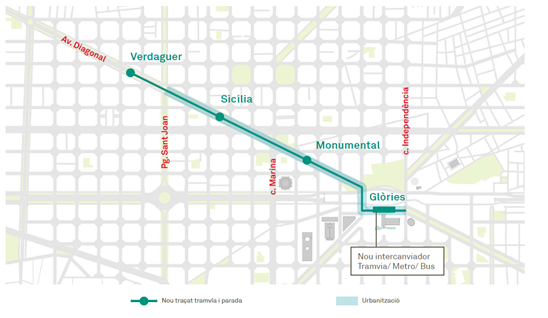
Trambesòs line T4 will serve Diagonal and lines T5/T6 will serve Meridiana to Ciutadella Vila Olímpica. The location of the Glòries stop will be changed in the new interchange within the Urban Canopy. The construction of this section will allow the tram to connect with four metro lines L1, L2, L4 and L5, and thirteen TMB bus lines, in addition to the three current Trambesòs lines, the T4, T5 and T6.
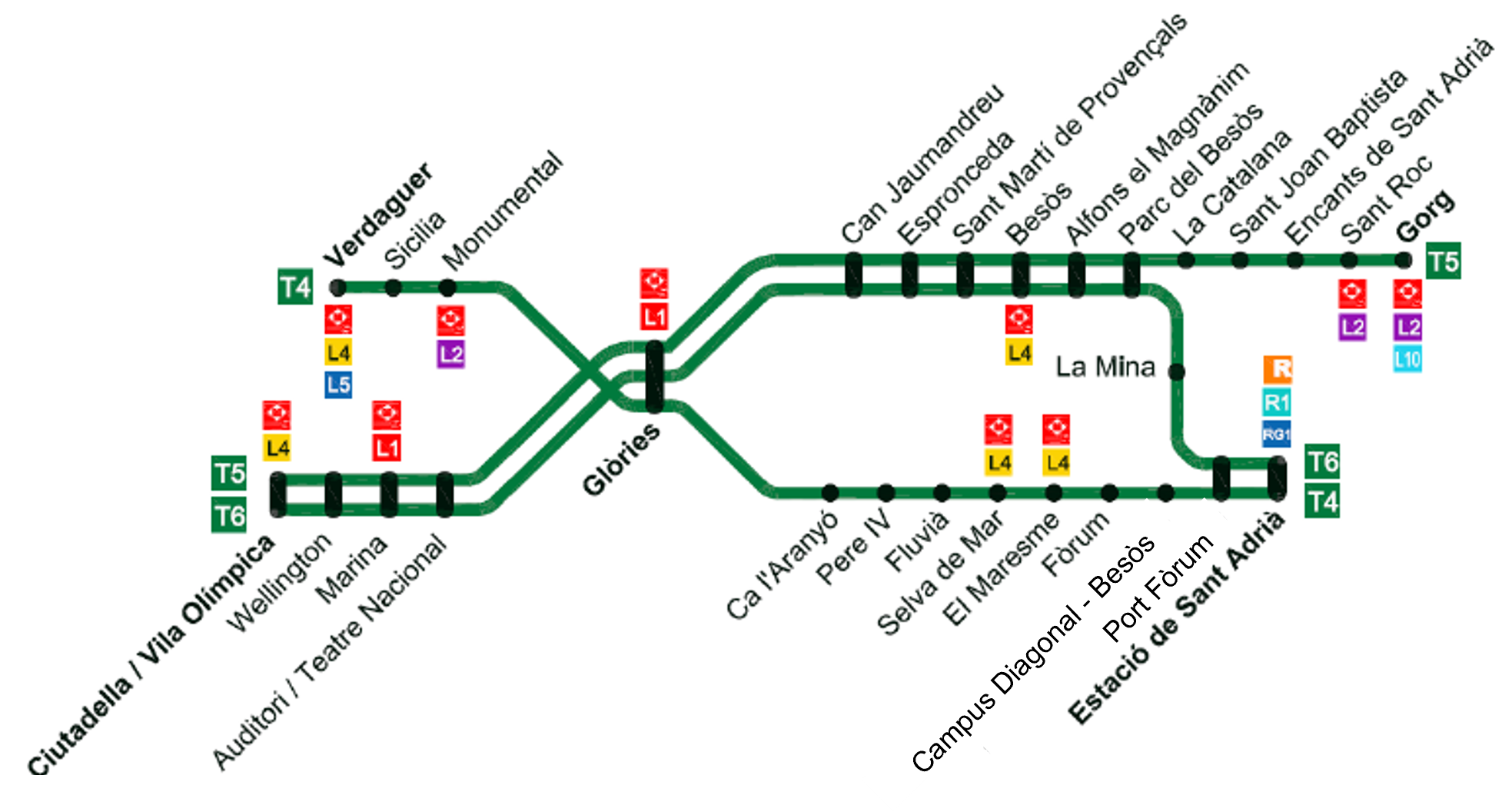
The construction works began on March 7, 2022, and it is expected that the start of service for this Phase 1 (Glòries - Verdaguer) will be in 2023.
Key technical facts and figures of Phase 1
- Track length: 1.80 km.
- New stops: 4 (Verdaguer, Sicília, Monumental and Glòries).
- Units of rolling stock required: 3 additional trams.
- Estimated demand: 19,000+ trips/day.

What will each section consist of?
- Section 1 - Passeig Sant Joan – Marina: Double track line sections
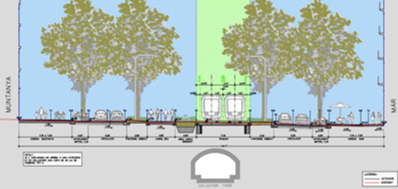
- Section 2 - Sicília– Verdaguer: Double track stops: Double track stops
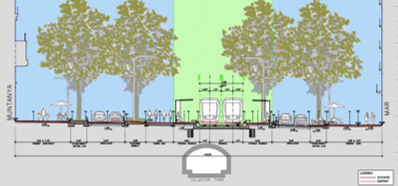
- Section 3 - Padilla – Cartagena: Sections of line in two simple tracks
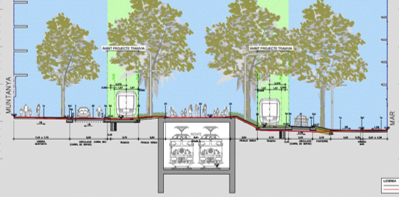
- Section 4 - Monumental: Stops on two single tracks
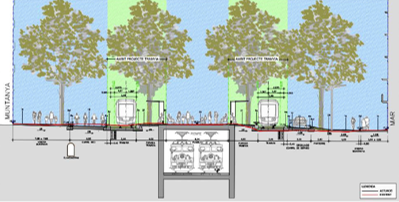
New rolling stock
The ATM has recently issued a tender for the procurement for 17 million euros and a maximum delivery period of 17 months.Three new trains will be purchased that will cover the section between Plaça de les Glòries and Plaça Verdaguer in 2023.
The characteristics of these new units that will join the Trambesòs network with Verdaguer (1.8 km with three new stops), are practically the same as those of the current fleet, with a minimum total capacity of 218 passengers (minimum 56 seated ).
The current tram fleet consists of 41 units, all manufactured by Alstom, and built in different years (2003 for the initial 37 units; 2011 for the additional four).
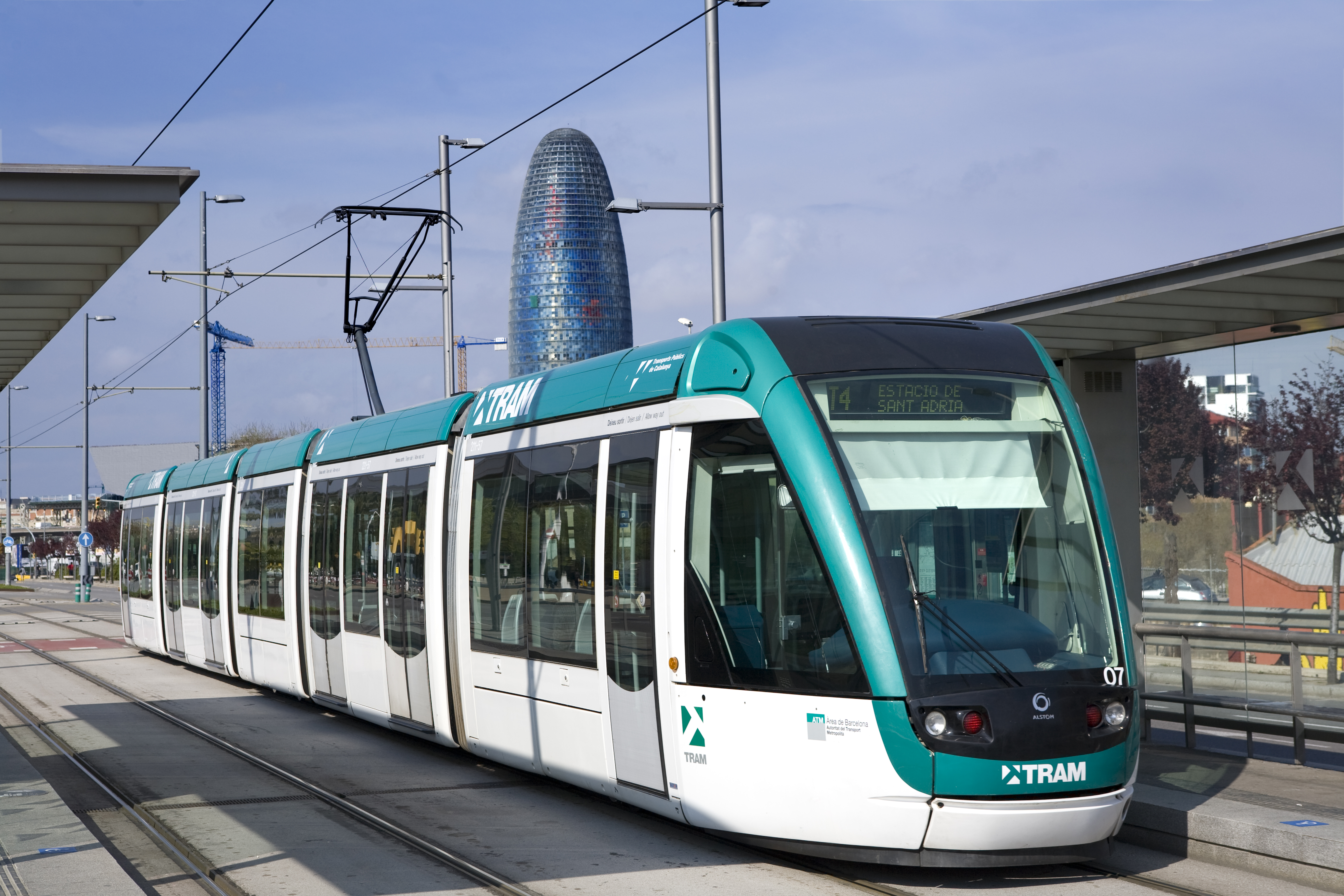
New stops
The new platform canopies have been designed under the direction of the Barcelona City Council's urban model services and the ATM's mobility department.
It is a modular canopy that will be located on the platforms of the new tram stops. On the platforms on the side of the sea (Glòries direction) the modules will be installed in the spaces between the trees, and on the platforms on the side of the mountains (Verdaguer direction), they will be installed continuously.
Two unique layouts are planned at the Glòries and Verdaguer stops:
- The future stop-interchange of Glòries, located in front of the Museu del Disseny Hub, consists of 3 platforms and it is expected that in the final situation the shelter will be guaranteed by pergolas that will be installed with the urban development of the area.
- In this phase 1, the Verdaguer stop, which will be the terminus of the T4 line, will have a single platform where the exchange of passengers will take place, so it will only have canopies on this platform located on the sea side . This stop will be equipped with the second platform in the next Phase 2 of the project.
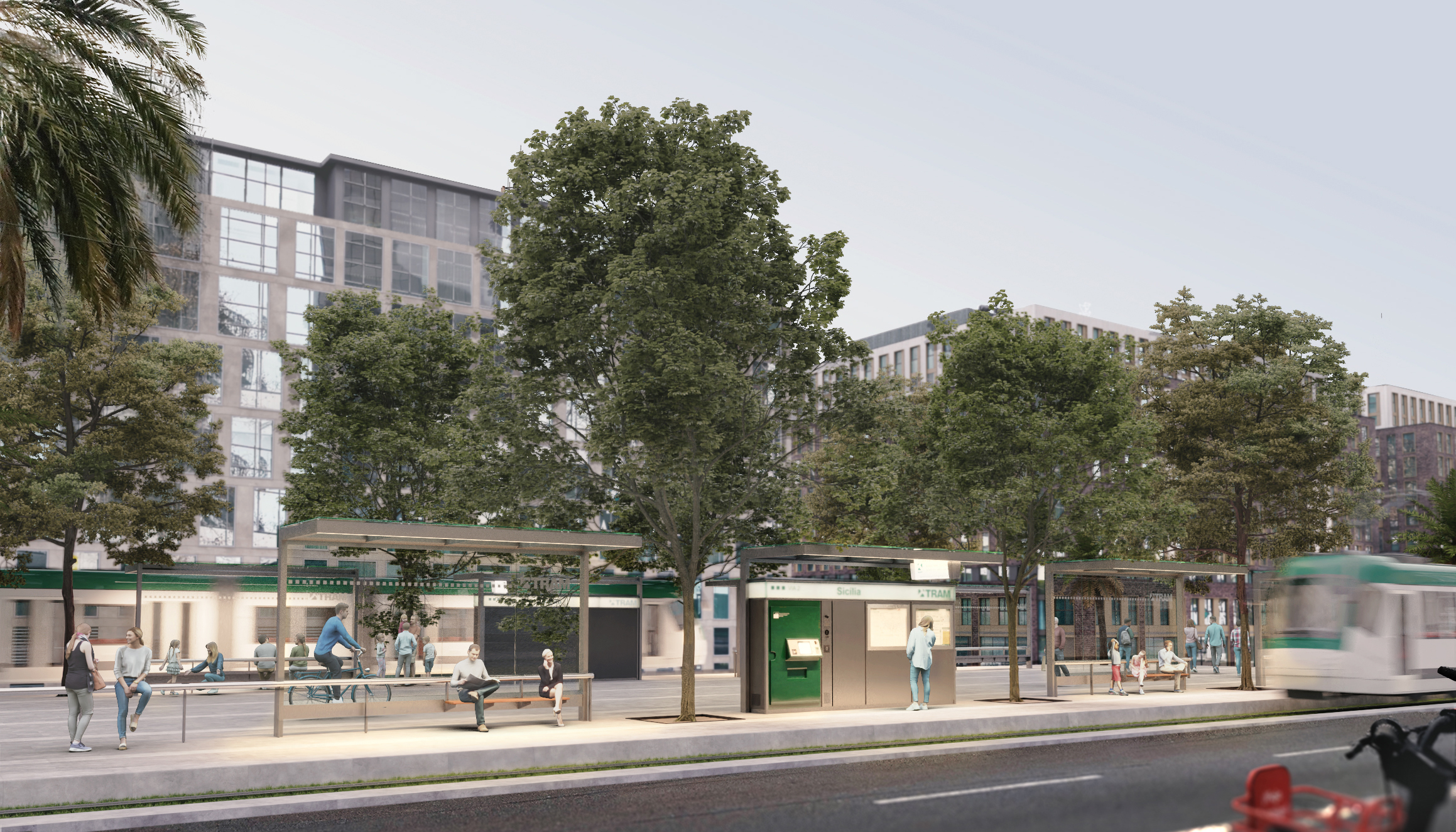
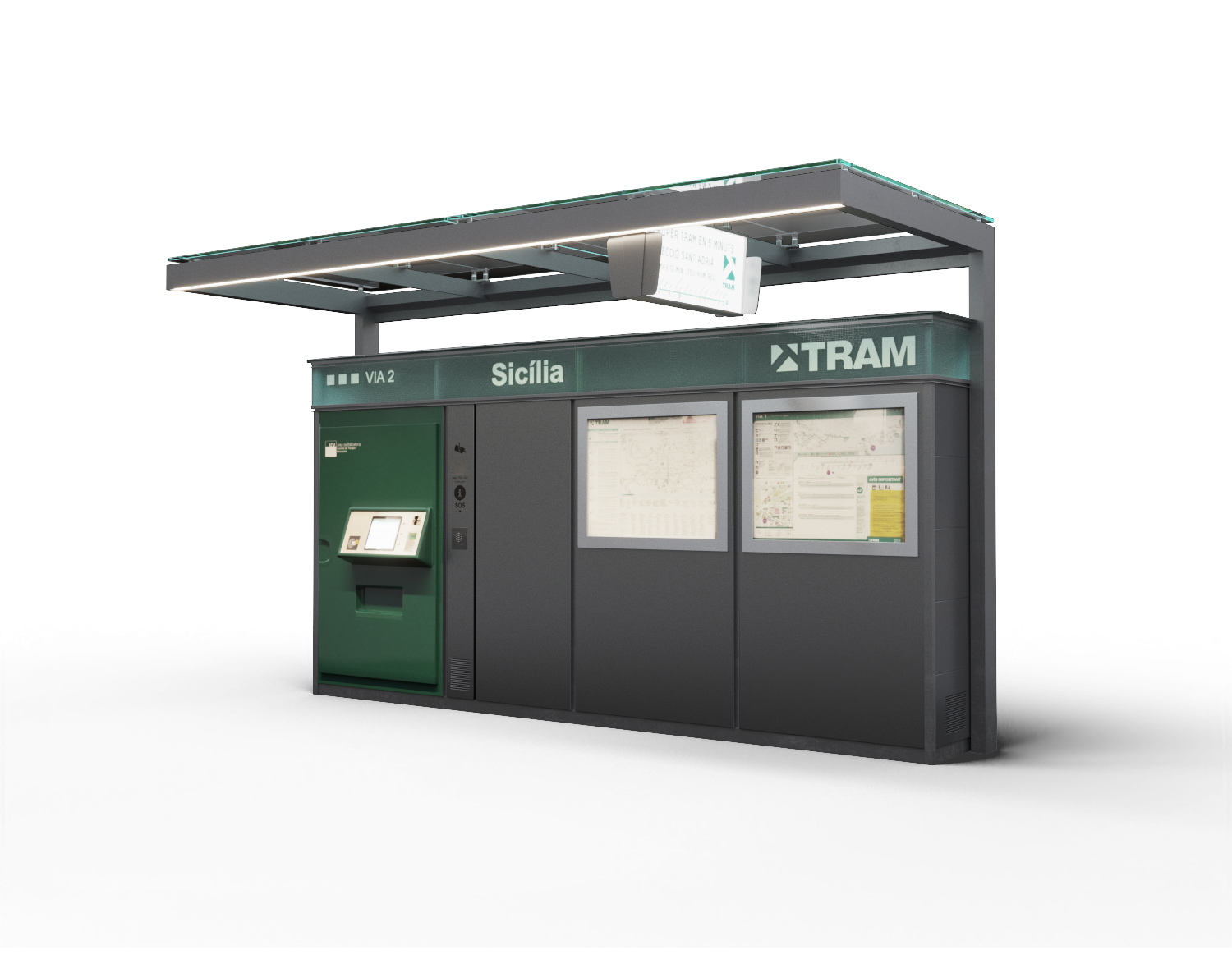
Important works and impacts
- Creation of the large public transport interchange in Glòries
In coordination with the Urban Canopy project, drafted by BIMSA-Aj. of Barcelona, -in which the entire sea side of the park will be developed, in the section between the streets carrer Cartagena and Badajoz- the Glòries stop is relocated in front of the HUB - Museu del Disseny creating a new tram-bus-metro public transport interchange with adaptation of the route of the current tram tracks within this area, and some gardens around the entrances to the Glòries metro station (L1).

- Impact of the ADIF rail company covered tunnel
The fit of the new tramway level between Marina and Consell de Cent is constrained by the existing cut-and-cover project in Carrer Marina which involves the covering of the ADIF tunnel and which constitutes a longitudinal hard point. With this constraint, the decision was made to soften the slope from 9% to the maximum acceptable for the trams currently in service, set at 7%.
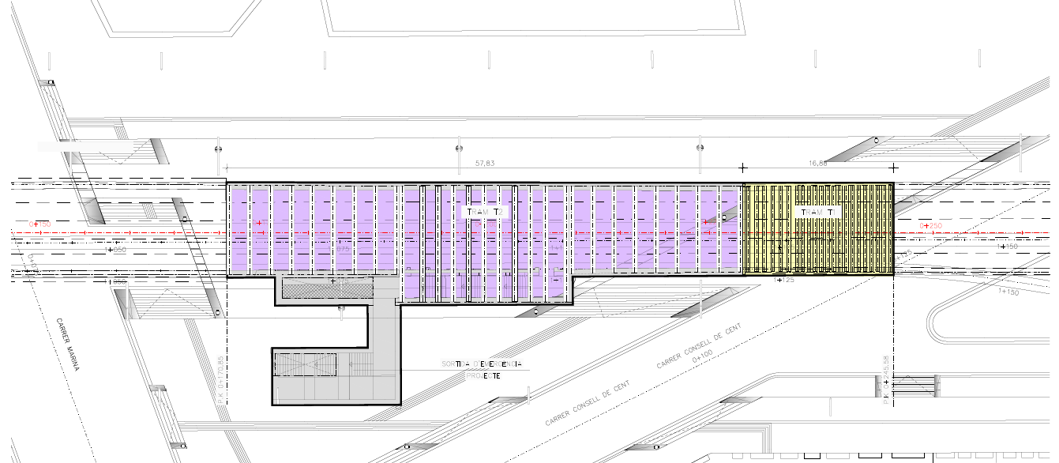
Features of the service:
- Power supply without overhead cables: The connection of the tram networks along Avinguda Diagonal will be carried out without an overhead contact or catenary line.
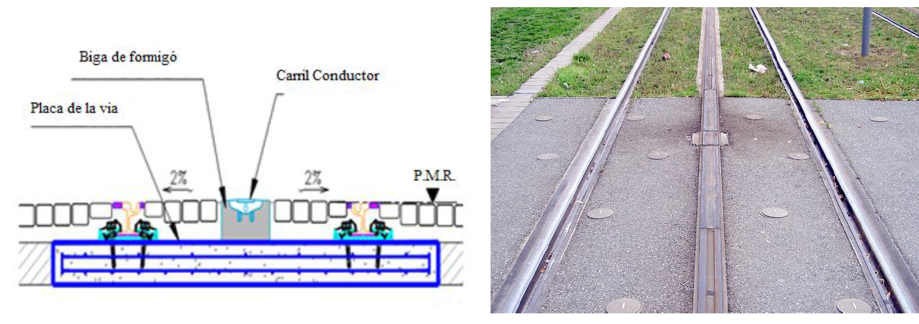
- The main advantage of this technology is the maximum urban integration of the tram into the historical fabric, with monuments and iconic buildings and other representative features of Avinguda Diagonal, guaranteeing an uncluttered space without lamp posts.
- There are different solutions without overhead cables in trams around the world: The ground-level power supply (GLPS) is based on a third rail that continuously provides safe power for the trams as they pass through on an exclusive basis. Unlike other solutions, this does not compromise the autonomy of the trams in view of the increasingly extreme adverse weather conditions or any traffic interruptions or incidents that interrupt their movement.
- It will be the first time in Spain that ACT [agile charging technology] has been implemented in trams and the second time in the world, as far as we know, that a fleet of trams in operation has been adapted to this technology.
View the complete work commencement file
Do you have any queries? Enter here
View the neighbourhood consultation minutes
-
Phase 2: Verdaguer – Francesc Macià
- Expected start of the entry into service of Phase 2 (total connection): 2026.
Videos of the progress of the #TramviaConnectat works
Un #TramviaConnectat | Comencen a circular els primers tramvies al nou tram de Glòries!
Els combois han fet una marxa a velocitat reduïda pel nou tramb de Glòries, completant amb èxit una de les fites més importants de les obres i que preveu, amb la nova parada de la plaça, esdevenir un gran intercanviador de transport públic.
Es connecta l’últim tram de via de la fase 1
La soldadura dels carrils a l'avinguda Diagonal a l’altura de #Verdaguer porta les obres de la primera fase al 70% de la seva realització!
Comencen a circular els primers tramvies al nou tram de Glòries!
Els combois han fet una marxa a velocitat reduïda pel nou tramb de Glòries, completant amb èxit una de les fites més importants de les obres i que preveu, amb la nova parada de la plaça, esdevenir un gran intercanviador de transport públic.
Un #TramviaConnectat | Descobreix les obres des de l'aire i els beneficis de la connexió
La connexió de les dues xarxes de tramvies per la Diagonal
Unirà les places Francesc Macià amb Glòries: 4 km en 15 minuts
Solucionarà una disfunció actual: un tramvia interromput
Es construiran 6 noves parades i es reubicarà l'actual de Glòries.
Les obres s'estan fent en 2 fases: (Fase 1 2024 i Fase 2 2026)
Descongestionarà de la xarxa d'autobusos
Crearà nous intercanviadors amb metro, bus i ferrocarrils
Connectarà directament fins a 9 municipis.
Reduirà 12.500 vehicles privats al dia.
Aportarà una demanda estimada de +117.000 usuaris nous.
Permetrà guanyar 8.400 m² nous per a vianants, 2.500 m² d'espais ciclables i 5.000 m² d'àrees verdes.
S'alimentarà per tercer carril, sense catenària, de forma contínua i segura.
Aquesta solució no posa en compromís l'autonomia dels tramvies davant condicions climàtiques
Permetrà la màxima integració urbana del tramvia en el teixit arquitectònic de Barcelona.
Serà la primera vegada a l'Estat espanyol que s'implementa aquesta tecnologia en tramvies.
I la segona vegada al món que s'adapta una flota en funcionament a aquesta tecnologia.
Phase 1 of the works is progressing!
Phase 1 of the works #TramviaConnected is forging ahead! On Avinguda Diagonal you can already see the tram platform and the new bike lane!
Work is underway at different points simultaneously on Diagonal, between Glòries and Carrer Girona.
There will be a large interchange in Parc de les Glòries, in front of the Museu del Disseny Hub.
It will have three platforms and direct access to the metro L1 station.
The tram tracks will start to be laid at the beginning of 2023 and the commissioning of the new section is expected in 2024.
The first lanes arrive in Barcelona!
The tracks are starting to take shape!
The first platform shelters of the Sicília station are installed and the first rail welding is done!
The first platform shelters of the Sicília station are installed!
The stops will have a different design from the current ones, with modules distributed along the platform.
A platform shelter will centralise all services to users and the rest will be used to shelter travellers.
The Sicília stop is one of the 4 that will make up phase 1 of the connection.
It is estimated that the stretch from Glòries to Verdaguer will bring an additional demand of 19,000 trips/day.
The first welding of the rails has also been carried out, which will allow the tracks to be fixed in their final position.
These are two significant milestones that show the progress of works on the tram connection along Diagonal.
Un #TramviaConnectat | S'instal·len les primeres marquesines de l'estació de Sicília!
Els tramvies que circularan pel nou tram s'alimentara per tercer carril, sense catenària, de forma contínua i segura.
Aquesta solució no posa en compromís l'autonomia dels tramvies davant condicions climàtiques
Permetrà la màxima integració urbana del tramvia en el teixit arquitectònic de Barcelona.
Serà la primera vegada a l'Estat espanyol que s'implementa aquesta tecnologia en tramvies.
I la segona vegada al món que s'adapta una flota en funcionament a aquesta tecnologia.